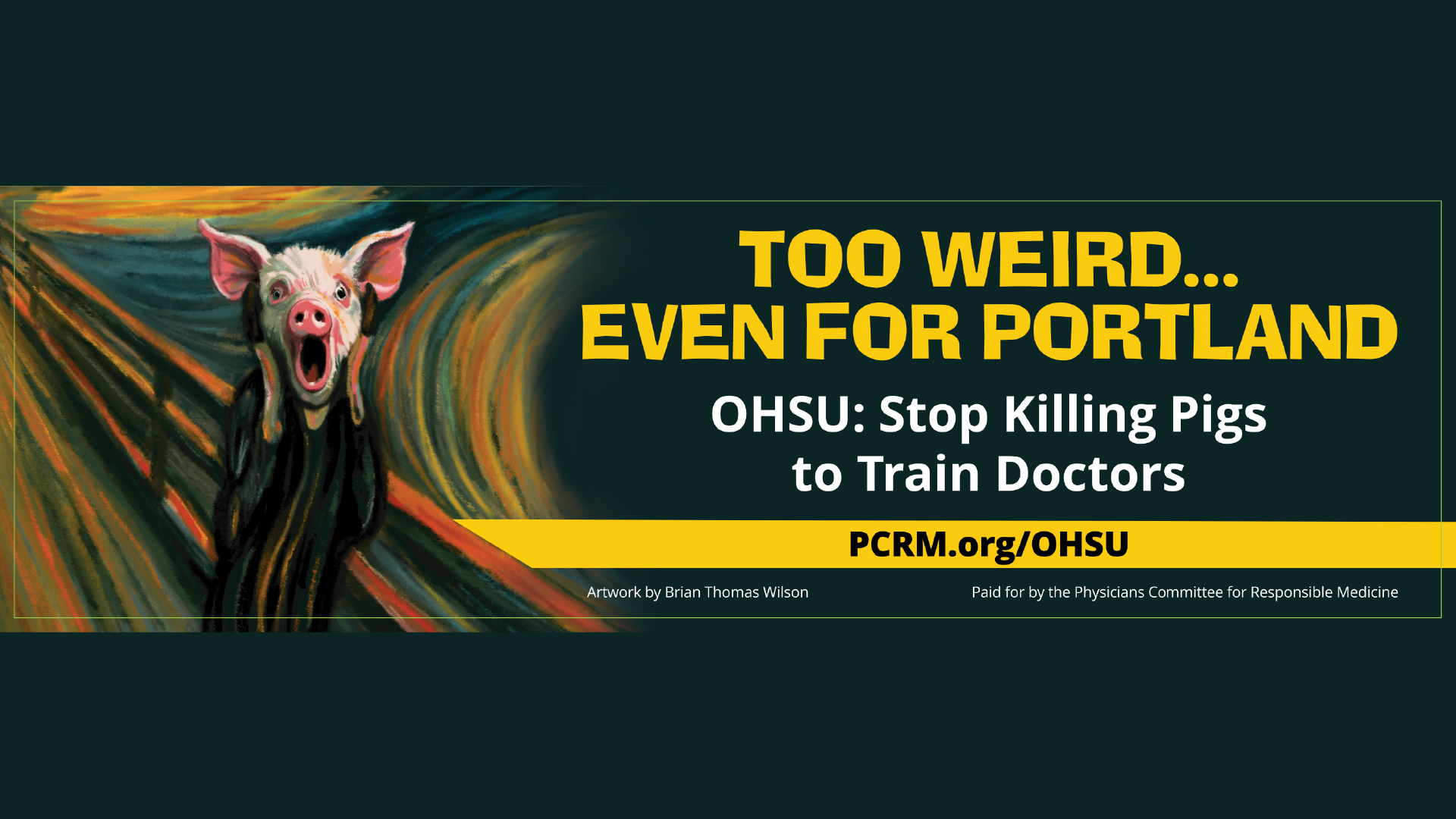Too Weird for Portland: Billboard Questions OHSU’s Archaic Practice of Killing Animals to Train Doctors
Medical Ethics Group Offers to Pay for Demonstration of Model Based on Human Anatomy

PORTLAND—With a billboard designed by a local artist, a national medical ethics and education group is pointing out that some things are too weird “even for Portland.” The Physicians Committee for Responsible Medicine also sent a letter today from more than 500 doctors to Oregon Health and Science University president Danny Jacobs, MD, urging him to replace animals with methods based on human anatomy for training surgeons. The letter points out that 79% of surgery residencies in the United States and Canada currently teach without animals and offers to pay $13,000 to demonstrate to OHSU faculty a realistic “perfused” human cadaver that bleeds and features an artificial beating heart.
Those traveling north on I-5 will see the Physicians Committee’s original billboard on the right-hand side as they pass by OHSU’s lower campus. The design, from Wilson Brothers Tattoo co-owner Brian Thomas Wilson, reimagines Edvard Munch’s famous unnerving painting The Scream, with a shocked-looking pig with hooves held to the face. The billboard’s message plays on the iconic Keep Portland Weird sign, reading: “Too Weird… Even for Portland. OHSU: Stop Killing Pigs to Train Doctors. PCRM.org/OHSU.”
“Portland may be quirky, but it's filled with compassionate, intelligent individuals who want our doctors trained using the best methods possible,” said Dr. Barry Jarvis of Eugene, Oregon. “More than 200 medical centers across the country teach surgeons without killing animals—OHSU should do the same.”
According to public records, OHSU subjects live pigs to 35 different invasive procedures—including sticking tubes and needles into the animals’ throats and chests and surgically removing organs—before killing them. In comparison, surgery programs affiliated with Harvard Medical School, Stanford University, the Mayo Clinic, the Cleveland Clinic, and the University of Washington use only models based on human anatomy. These devices, often called simulators, include layers of lifelike skin, muscle, fat, and blood vessels. They can bleed, and some of them provide lifelike physiological responses. They also ensure that surgeons will not have to eventually adapt procedures they learned to perform on a pig to a human patient. Compared to the human body, pigs have smaller torsos, lighter limbs, and thicker skin. There are also important differences in the anatomy of the head and neck, internal organs, rib cage, blood vessels, and the airway.
OHSU itself already has two state-of-the-art simulation centers that offer a range of nonanimal training devices. But the Physicians Committee is offering to demonstrate the “perfused” human cadaver so that OHSU can see its capabilities.
For a copy of the letter or the billboard artwork or the letter from physicians, please contact Reina Pohl at 202-527-7326 or rpohl [at] pcrm.org (rpohl[at]pcrm[dot]org).
Media Contact
Reina Pohl, MPH
202-527-7326
rpohl[at]pcrm.org
Founded in 1985, the Physicians Committee for Responsible Medicine is a nonprofit organization that promotes preventive medicine, conducts clinical research, and encourages higher standards for ethics and effectiveness in education and research.








